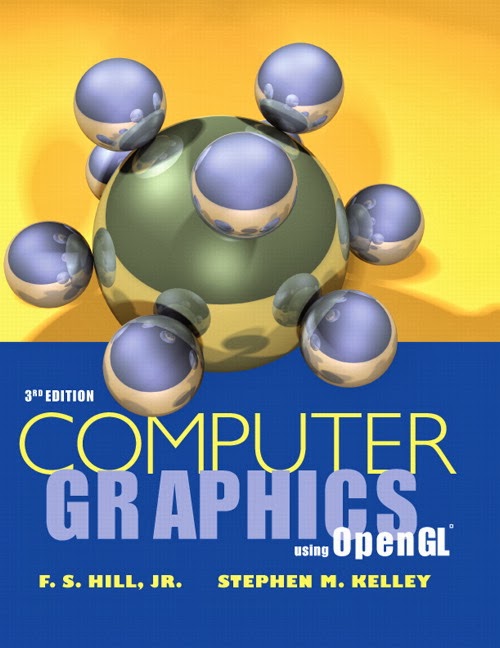
Computer
graphics is a very appealing
field of study. You learn to write programs that create pictures, rather than
streams of text or numbers. Humans respond readily to pictorial information,
and are able to absorb much more information from pictures than from a
collection of numbers. Our eye-brain systems are highly attuned to recognizing visual
patterns. Reading text is of course one form of pattern recognition: we
instantly recognize character shapes, form them into words, and interpret their
meaning. But we are even more acute when glancing at a picture. What might be
an inscrutable blather of numbers when presented as text becomes an instantly
recognizable shape or pattern when presented graphically. The amount of
information in a picture can be enormous. We not only recognize what’s “in it”,
but also glean a world of information from its subtle details and texture.
As Compare to earlier editions (1st and
2nd) the authors made some additions in third edition. They add some new
advance concepts and new exercise materials also. This books helps you to learn
basics as well as advance concepts of Computer Graphics using 2D and 3D
methods. The most cool thing in this book is the case studies which are
included at the end of each chapter. I am going to mention its contents right
here that will definitely helps you before reading this book.
Chapter 1 Introduction to Computer Graphics
What Is Computer Graphics?
Where Computer-Generated Pictures Are Used
Elements of Pictures Created in Computer Graphics
Graphics Display Devices
Graphics Input Primitives and Devices
Chapter 2 Initial Steps in Drawing Figures
To Get Started Making Pictures
The OpenGL Basic Graphics Primitives
Line Drawings in OpenGL
Simple Interaction with the Mouse and Keyboard
Introduction to the Design and Use of Menüs in an Application
Chapter 3 Additional Drawing Tools
World Windows and Viewports
Clipping Lines
Regular Polygons, Circles, and Ares
The Parametric Form for a Curve
Case Studies
Chapter 4 Vector Tools for Graphics
The Dot Product
The Cross Product of Two Vectors
Representations of Key Geometrie Objects
Polygon Intersection Problems
Chapter 5 Transformations of Objects
Introduction to Transformations
3D Affine Transformations
How To Change Coordinate Systems
Affine Transformations Used in a Program
To Draw 3D Scenes Interactively with OpenGL
Chapter 6 Modeling Shapes with Polygonal Meshes
Solid Modeling with Polygonal Meshes
Polyhedra
Extruded Shapes
Mesh Approximations to Smooth Objects
Particle Systems and Physically Based Systems
Chapter 7 Three-Dimensional Viewing
The Camera Revisited
To Specify a Camera in a Program
Perspective Projections of 3D Objects
To Produce Stereo Views
Taxonomy of Projections
Chapter 8 Rendering Facesfor Visual Realism
Introduction to Shading Models
Fiat Shading and Smooth Shading
Add Texture to Faces
OpenGL 2.0 & The Shading Language (GLSL)
Chapter 9 Tools for Raster Displays
Manipulating Pixmaps
Combining Pixmaps
Manipulating Symbolically Defined Regions
Filling Polygon-Defined Regions
Chapter 10 Curve and Surface Design
Bezier Curves for Curve Design
Finding Better Blending Functions
The B-Spline Basis Functions
Useful Properties of B-Spline Curves for Design
Rational Splines and NURBS Curves
A Glimpse at Interpolation
Modeling Curved Surfaces
Chapter 11 Color Theory
Color Description
The CIE Standard
Color Spaces
Indexed Color and the LUT
Color Quantization
Chapter 12 Introduction to Ray Tracing
Intersection of a Ray with an Object
Organizing a Ray Tracer Application
Adding Surface Texture
Antialiasing Ray Tracings
Adding Shadows for Greater Realism
Reflections and Transparency
Compound Objects: Boolean Operations on Objects
Ray Tracing vs. Ray Casting
0 comments:
Post a Comment